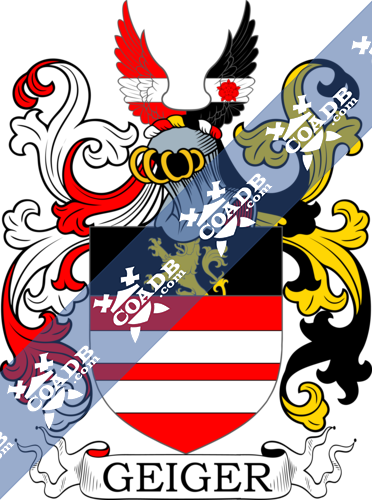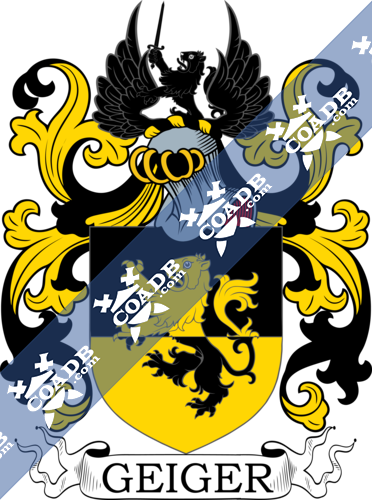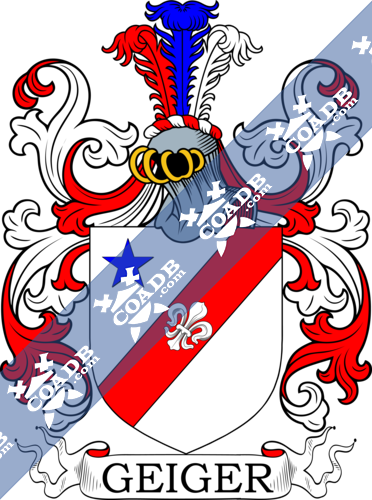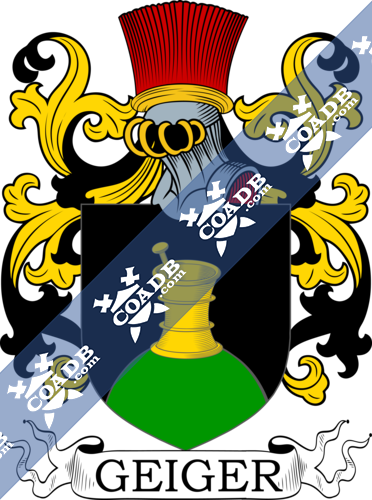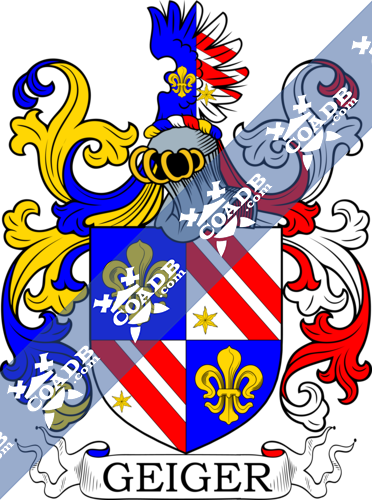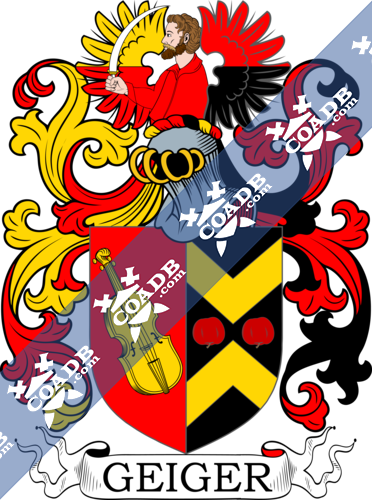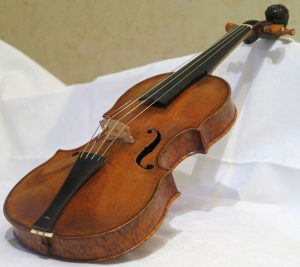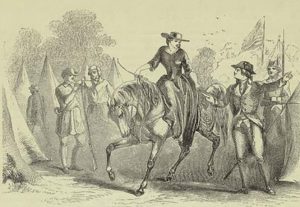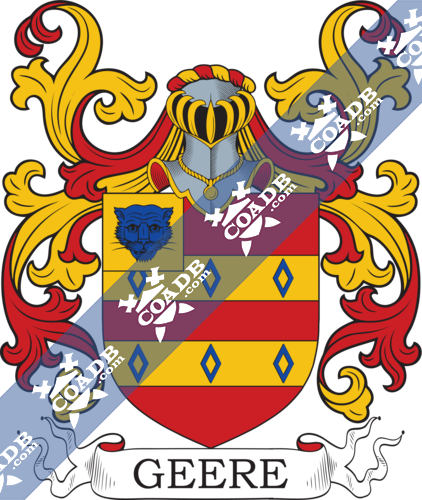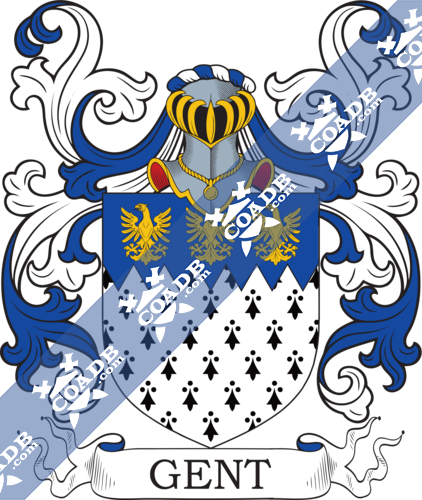Geiger Family Crest, Coat of Arms and Name History
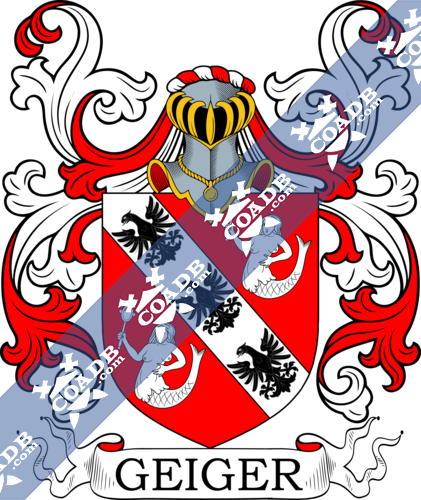
Geiger Coat of Arms Gallery
Don’t know which Coat of Arms is yours?
We can do a genealogical research. Find out the exact history of your family!
Learn MoreSurname Name Meaning, Origin, and Etymology
This is a German occupational surname for a person who either played or made a violin, and came to be borne by village musicians. It derives from the Middle High German word giger, meaning violin or the word geige, meaning fiddle. The medieval German society from the 7th century through to the high middle ages had a name for a traveling musician and poet; these musicians were called minnesingers. It was also a traditional role for wealthy merchants and lords to pay for trained musicians to perform at weddings or other important events. One source claims the family was first found in Normandy, France and later became rooted in the Calvados region.
The largest population of the Geiger surname still resides in Austria, Germany, followed by Switzerland, Hungary, the United States of America and lastly Canada. The cities with the largest populations of the surname live in, Stuttgart, Munich, Mannheim, and Karslruhe.
The Geiger surname is found in Switzerland, Bavaria, and Eastern German border region with France in Alsace-Lorraine. It is particularly popular in Strasbourg. One of the earliest mentions of a Geiger in the German nobility was from Holy Roman Emperor Charles V for a coat of arms and a crest to a Hans Geiger in September of 1530. Hans Geiger had been the keeper of the treasury for the Count of Fugger. The Fugger Counts, were at one time the most powerful banking family in Europe in the 16th and 17th centuries. The had taken over the running of the banking system from the Medici’s of Italy, and were loaning and investing money to every noble family in the then Holy Roman Empire. The Fugger’s base of operations were located in Bavaria and specifically in Augsburg.
Spelling Variations
Common spelling variants are Geige, Geyger, Geygher, and Geigher. For the Swiss branch of this family, spelling variants include Gieger, Giger, Gyger. The name Kiger or Kyger may be a corruption of Geiger as well.
History, Genealogy, and Ancestry
Some people believe the Geiger’s were “Black Dutch”, but genealogist are unsure of the phrases meaning and believe it to be myth. Others believe it refers to people that are of Irish, Amish, Cherokee, Dutch-Indonesian, or Sephardic descent.
A one Jacob Geiger was born in 1778 and married Christina Schoner. Together they had a son named Samuel who was born in 1798. Samuel married Sarah Egolf and had two children with her prior to his death in 1854 in Berks County, Pennsylvania: Albert Egolf and John Michael. Albert was born in 1825and later married Mary Ann Hallman. He had two children: Henry Frederick (1853) and Samuel H. Henry (1855). He died in 1895.
A one Michaelis Geiger was born in 1611 in Mosbach, Germany. He married Katharina Dunte and had one daughter (at least) named Maria. Maria was born in the same city in 1639. In 1660, she married Valentinius Muller and had numerous issue with her including: Valentine, Maria, Thomas, Kaspar, Margaretha, Michale, Andreas, Jakob, Sebastian, and Katharina.
Francis Xavier Geiger was born in 1825 in Wurrtemburg, Germany. He married Mary Magdelena Newkamp in 1853. Together they had a son named Anthony, who was born Michiahn in 1861. Anthony married Pauline Discher in 1892 in Althone, Michigan. They left the following issue prior to his death in 1936: Edward, Benjamin, Leo F, Antoinette Marie, Rose A., Clara M., Joseph, and Arthur E.
Blazons & Genealogy Notes
2) Bâle D’azur à un violon posé en bande le manche en haut et un archet brochant en fasce le tout au naturel Cimier une corneille de sable Lambrequin d’argent et d’azur. English: Azure, a violin in bend, the handle upright, with a bow interwoven fesswise, all proper. Crest: a crow sable, Mantling: argent and azure.
3) Nuremberg De sable à un mortier d’apothicaire d’or posé sur un tertre de sinople Cimier le mortier. English: Sable, a mortar or placed on a mound vert. Crest: The Lord Mayor’s Cap.
4) Ulm Coupé d’argent sur sable à deux têtes et cols contournées de boeuf de l’un à l’autre Cimier une tête et col de boeuf d’argent. English: Per fess argent and sable, two oxen’s heads reversed counterchanged Crest: the head of an ox argent.
5) Nuremberg Tranché d’or sur azur à un violon posé en bande de l’un en l’autre Cimier un buste d’homme habillé d’azur boutonné d’or coiffé d’un bonnet pointu d’azur retroussé d’or. English: Per bend or and azure, a violin in bend counterchanged. Crest: The bust of a man dressed in azure with buttons or wearing a pointed hat of azure with a rim of or.
6) (Chevaliers) – Allemagne Écartelé aux 1 et 4 d’azur à une fleur-de-lis d’or aux 2 et 3 d’argent à deux bandes de gueules acc en pointe à dextre d’une étoile d’or Casque couronné Cimier un demi-vol parti à dextre les armes du 1 et à senestre les armes du 2 Lambrequin à dextre d’or et d’azur à senestre d’argent et de gueules. English: Quarterly, 1st & 4th azure a fleur-de-lys or; 2nd & 3rd argent two bends gules, accompanied in base to the dexter an etoile or. Crowned with a helmet, crest a wing party per pale on the dexter the arms of the first quarter, on the sinister the arms of the second quarter; mantling to the dexter or and azure, to the sinister argent and gules.7) (Barons) – Strasbourg De gueules à la bande d’argent ch de trois alérions de sable et acc de deux sirènes d’argent tenant chacune un miroir du même. English: Gules, on a bend argent between two mermaids argent, each holding a mirror of the same, three eaglets sable.
8) (Edle von) – Bavière – (An., 29 mars 1774) Écartelé aux 1 et 4 d’azur au lion d’argent celui du 1 contourné aux 2 et 3 d’or à deux fasces de gueules Deux casques couronnés Cimiers 1° le lion du 1 issant entre deux proboscides d’azur Lambrequin d’argent et d’azur 2° un vol aux armes du 2 Lambrequin d’or et de sable. English: Quarterly, 1st & 4th azure a lion argent that on the first reversed; 2nd & 3rd or two bars gules; crowned with two helmets, crests first the lion of the first quarter issuing between two proboscis azure, mantling argent and azure; second a wing with the arms of the second quarter, mantling or and sable (proboscis are elephant trunks).
9) Autriche Parti au 1 de gueules à un violon d’or posé en bande le manche en haut au 2 de sable à deux chevrons de gueules l’un renversé et mouv du chef acc de deux pommes au naturel rangées en fasce la queue en bas Casque couronné Cimier un buste de jeune homme habillé de gueules tenant un badelaire d’argent garni d’or entre un vol coupé à dextre d’or sur gueules à senestre de gueules sur sable Lambrequin conformes aux émaux du vol. English: Per pale, first gules a violin or in bend the handle upwards, second sable two chevrons gules one inverted and issuing from the chief surrounded by two apples proper in fess the stems downwards. Crowned with a helmet, crest the bust of a young man dressed in gules holding a sabre argent, decorated or, between a pair of wings per fess to the dexter or and gules to the sinister gules and sable; mantling same as the wings.
10) Autriche Coupé de sable sur or à un lion de l’un en l’autre Casque couronné Cimier un lion issant d’or tenant une épée entre un vol de sable. English: Per fess sable and or, a lion counterchanged crowned with a helmet crest a lion issant or holding a sword between a pair of wings sable.
11) de Klingenberg. Autriche – (Nob. du St.-Empire, 14 juillet 1685; conf. de nob., 8 juillet 1805) D’argent à la barre de gueules ch d’une fleur-de-lis du champ posée dans le sens de la barre et acc d’une étoile d’azur en chef Cimier trois plumes d’autruche de gueules d’azur et d’argent Lambrequin d’argent et de gueules. English: Argent a bend sinister gules charged with a fleur-de-lys of the field bend sinister-wise and accompanied by an etoile azure in chief. Crest three ostrich feathers gules, azure and argent, Mantling argent and gules.


